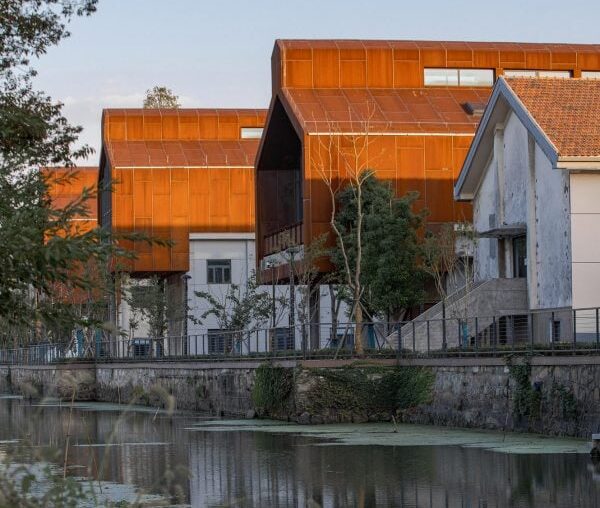Chinese studio Lichao Architecture Design Studio has transformed an abandoned brewery in Zhejiang, China, into a creative park, retaining its industrial character with additions in reclaimed brick and weathered steel.
The 25,400-square-metre site in the historic water town of Wuzhen was originally developed in the 1950s as an extensive factory campus containing production facilities, offices and staff dormitories, before falling into disuse in the 1980s.
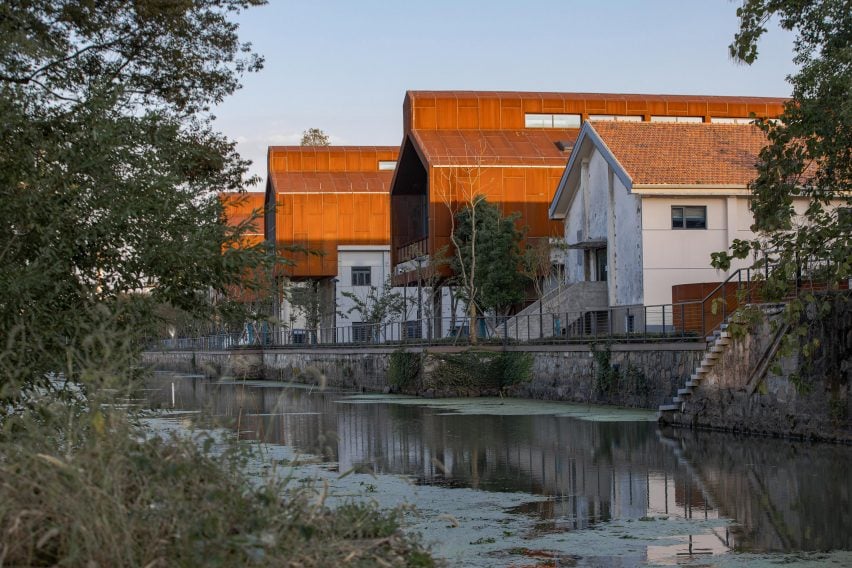
The Wuzhen Rural Brewery Renovation is located in China’s Zhejiang province and has been shortlisted in the sustainable renovation category of Dezeen Awards 2024. The project involved converting the site’s numerous neglected structures into a hub for theatre production.
Performance spaces, workshops, studios and hotels were all introduced into the former brewery’s redbrick structures, which were carefully maintained and extended to celebrate their status as important examples of local industrial heritage.
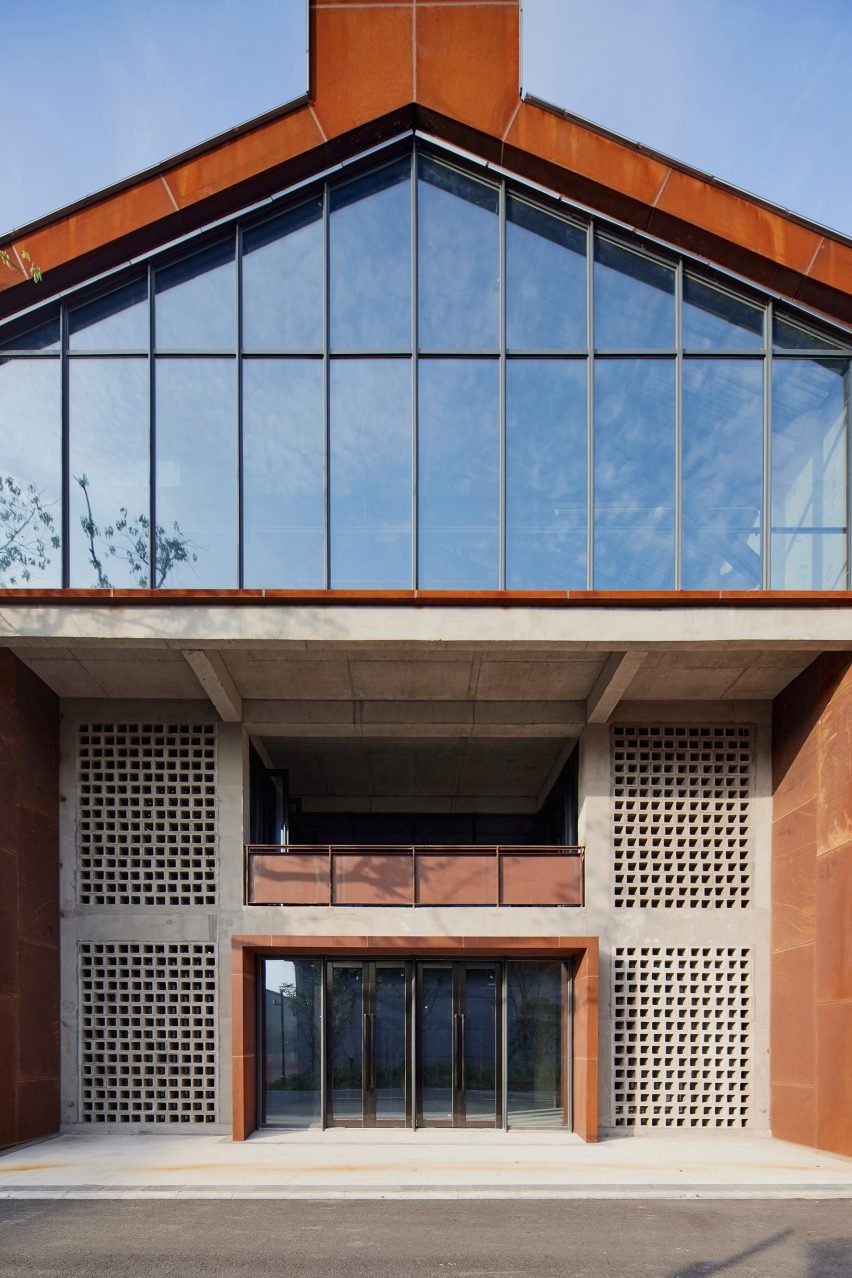
“As a testament to industrial development, the brewery buildings not only record a period of glory but also carry countless memories and emotions,” explained the studio.
“These red brick buildings, though dilapidated, still exude a rustic and substantial historical presence, holding irreplaceable cultural value.”
“It is crucial to excavate the site’s historical memory, consider social and economic benefits, and infuse new business formats and vitality, thereby realizing the inheritance and renewal of the industrial wasteland,” it added.
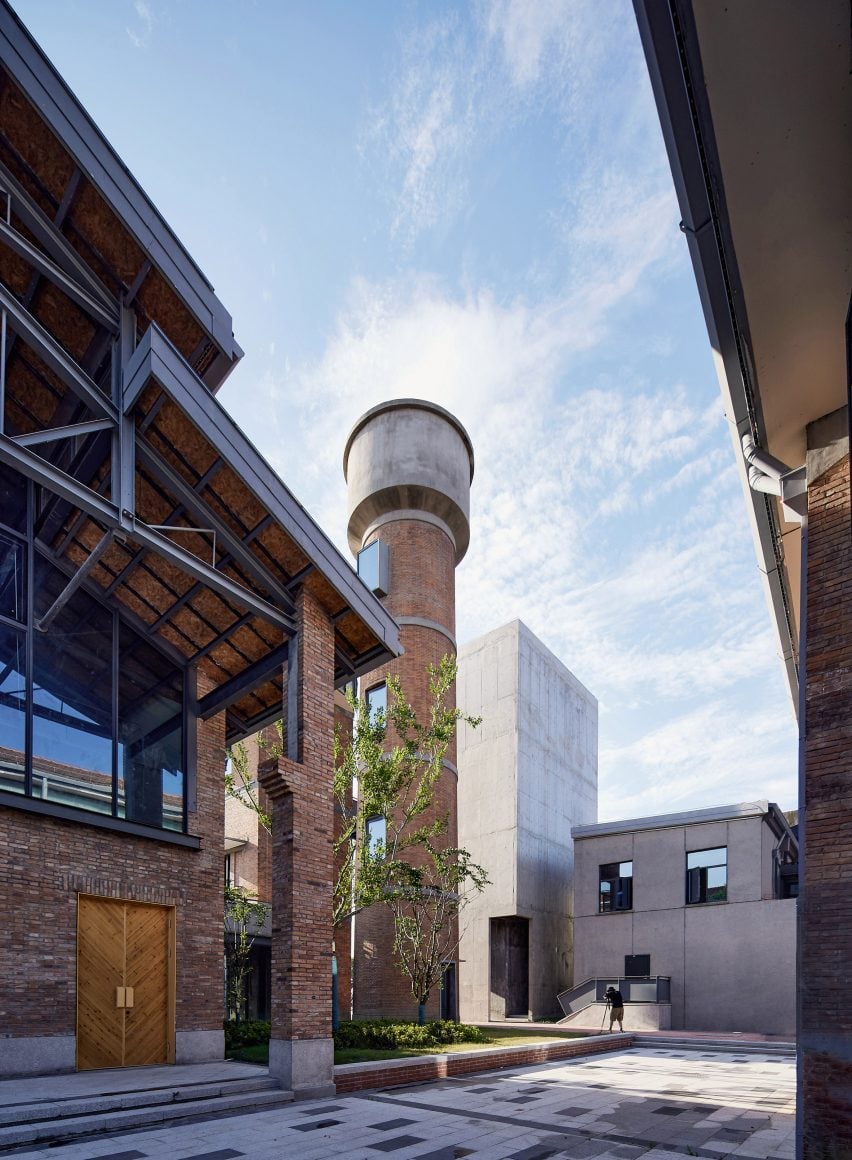
Elements that spoke most effectively to the site’s former industrial use – such as large metal trusses, chimneys, water and distillation towers – were used as the focal points for the introduction of new spaces at Wuzhen Rural Brewery.
Seeking to retain as much of the brewery’s historic fabric as possible, the project began with the categorisation of each structure into preservation, demolition, renovation and expansion, dependant on its condition.
New uses were introduced based on the buildings’ inherent qualities, with open warehouses becoming performance auditoria, former worker dormitories becoming hotels and restaurants and offices becoming theatre studios.
Where possible, the existing redbrick and steel structures were reinforced with as little external disruption as possible.

For those requiring more extensive extensions or additions, Lichao Architecture Design Studio used exposed concrete, weathered steel and bricks that had been retained from the demolished buildings.
Most noticeably, this included a series of entirely new structures built using perforated brickwork and steel trusses, and a series of new weathered steel roof structures for a number of the buildings.
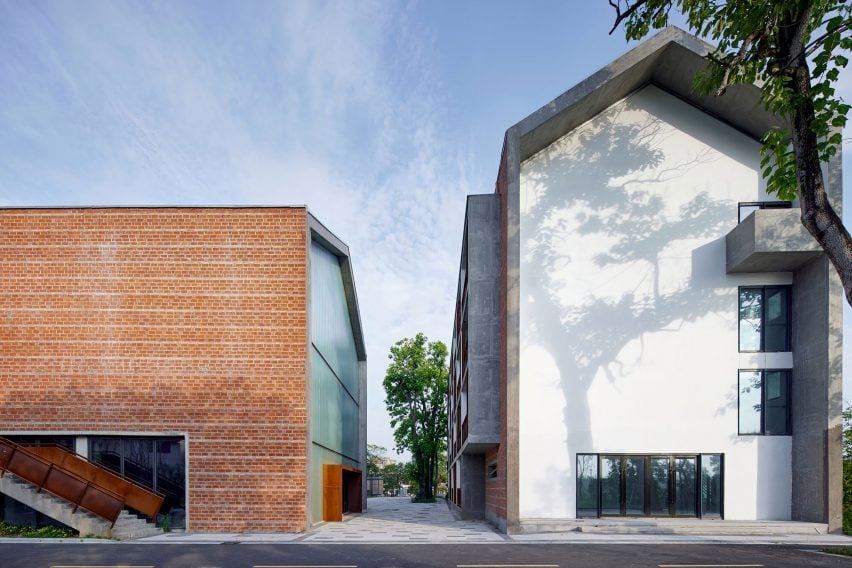
“Through meticulous repair techniques such as structural encapsulation, node refinement, and material replacement, the original industrial architecture’s aesthetic orientation was continued,” explained the studio.
“The spatial language was transformed to meet the needs of large, open, and multipurpose spaces, supporting exhibitions and performances while also accommodating creative offices, art training, and themed dining,” it added.
In Shenzhen, another former brewery was recently transformed into a cultural centre by local studio Urbanus, which similarly sought to retain the industrial structures on the site “as found.”
The photography is by MLEE Studio.
